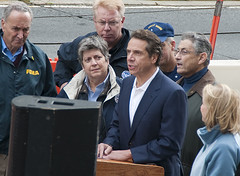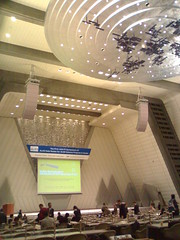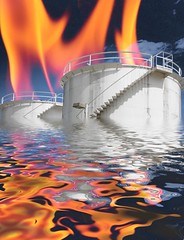In a statement released earlier this week, a bipartisan group of legislators from both the Senate and House of Representatives warned that the expiration of the wind protection tax credit (PTC) would result in the loss of a substantial number of manufacturing and construction jobs, thus triggering a great debate on the relevance of this credit and the efficacy of wind energy. The PTC “subsidizes new wind generation by 2.2 cents per kilowatt-hour of wind electricity produced”. If this credit is not renewed by Congress, it will expire at the end of the year. The impact of the threat of expiration of this credit already is being felt as wind companies are pushing back projects and laying off workers because of the looming uncertainty of federal funding.
After reading articles and blogs on this subject, I could not help but notice some of the comments made by other readers, many of which were constructive, but others, concerning. I use the term “concerning” because I see that in most debates or discussions regarding green initiatives, education and understanding of the issues, or the lack of such, clearly guides the dialogue on these topics.
Living green and understanding the need to effect environmental change requires education. Research and development and technological advancement enable scientists to find solutions to cleaner and efficient energy. This definitely comes at a cost, albeit a worthwhile expense. The push to advance science, technology, engineering and mathematics (STEM) in schools today recognizes the benefits of providing opportunities for students to explore new ideas and new worlds related to science. Education programs, such as STEM, provide a bridge from the old to the new and are so important because they enhance vision, which is a key ingredient in the success of any scientific venture.
Unfortunately, there are many diehards in this country, who are resistant to change, even if it is for the good of people and the environment. The green movement should not and cannot be dragged down by resistance to change, and modern technological solutions to energy problems should be welcomed, especially in the face of scientific evidence of looming catastrophes relative to climate change directly attributed to human behavior. This negative mindset is not new in America as history gives us many instances of innovative ideas that prevailed but were met with great resistance. An immediate example that comes to mind is the case of Henry Ford, who was successful in mass marketing the gas engine automobile in a time when many Americans would have settled for “faster horses“. In the same spirit of Henry Ford, the green movement must promote efficient wind energy solutions as the future of our nation rather than “clean oil” solutions as suggested by some people.
Another major issue with detractors of wind power, who would be happy to see the credit expire, surrounds the willingness to destroy the job market. Job creation is crucial to the recovery of the economy, and the market in wind energy projects presents the opportunity to add jobs. This is especially good for veterans because “work in wind energy offers vets the opportunity to use a wide variety of skills they learned in the military, such as risk analyses, problem-solving and contract negotiation. . .” So many of us voice our appreciation for the sacrifices of veterans and their families to protect us, and the promotion of wind energy projects through the PTC presents opportunities to reward returning soldiers with jobs, rather than just handshakes and pats on the back for their service.
Another potential base of support which needs to be tapped for wind energy advancement in this country is couples with young children or who are planning to have children. Today’s energy solutions will frame your children’s tomorrow. Living green should be the top priority on your agenda so that you can ensure a safe and healthy environment for your children. Issues of renewable energy, such as wind power should become routine in articles in parenting magazines and blogs designed to educate families on living healthy.
The time is running short to extend the PTC. As Congress haggles over the many issues dangling on the fiscal cliff, it is urgent that supporters of the green movement band together and speak up to protect the PTC so as to ensure the advancement of wind power as a viable source of energy in America. We cannot allow the defeat of innovation technology such as this that enables us to live green, be green.
Sources for this article:
http://www.denverpost.com/business/ci_21990652/four-governors-including-hickenlooper-urge-renewal-wind-power-credit
http://cleantechnica.com/2012/11/30/us-veterans-fight-for-wind-jobs-as-tax-credit-hits-the-cliff/
http://blogs.hbr.org/cs/2011/08/henry_ford_never_said_the_fast.html
http://www.huffingtonpost.com/2012/11/28/wind-tax-credit-fiscal-cliff_n_2207581.html?utm_hp_ref=green&ir=Green







